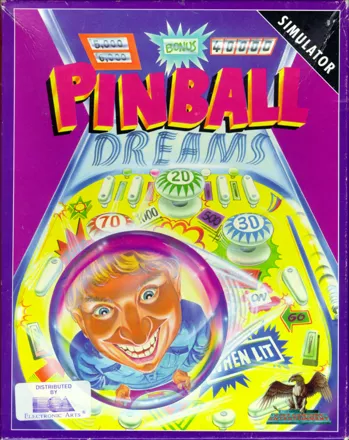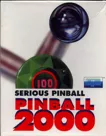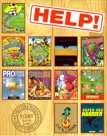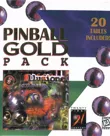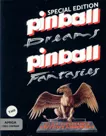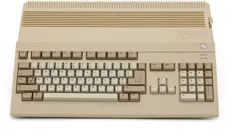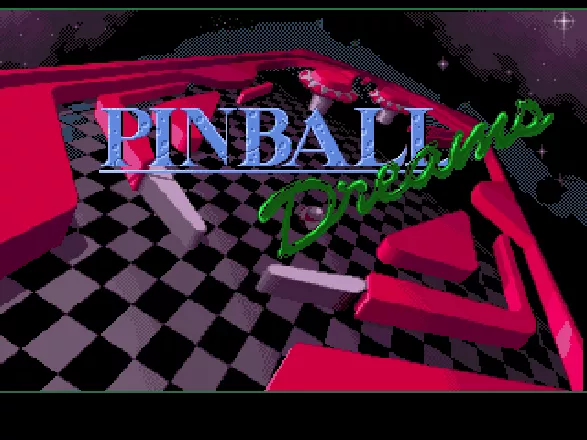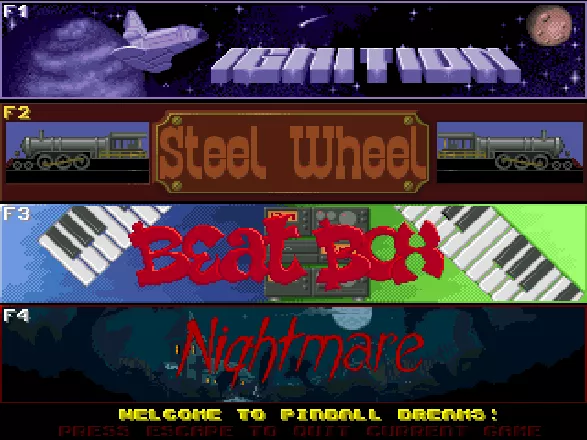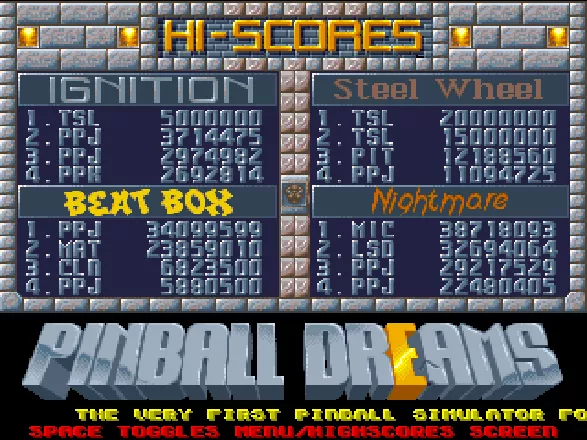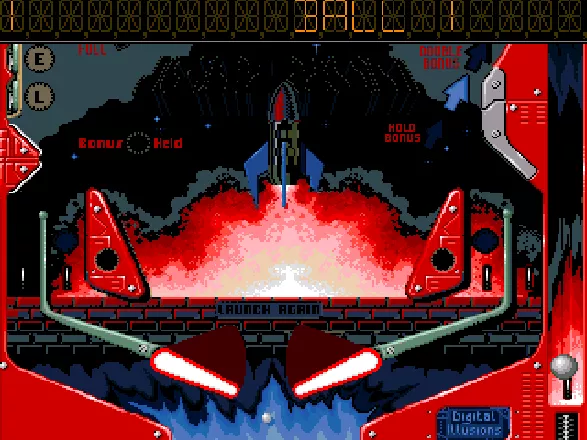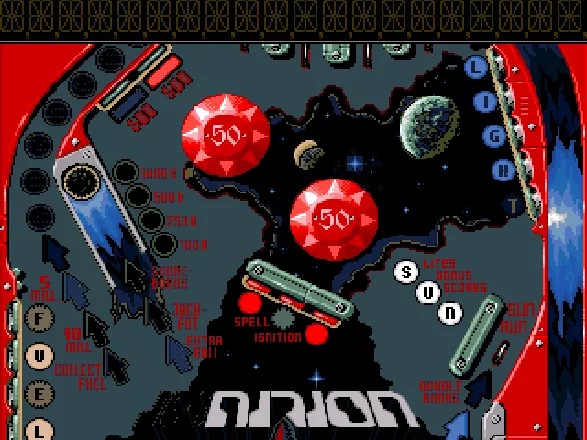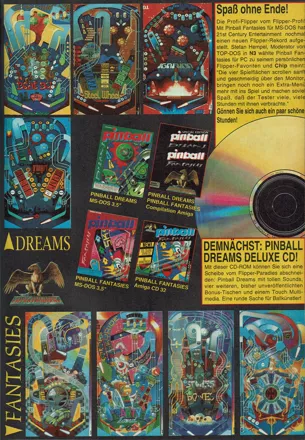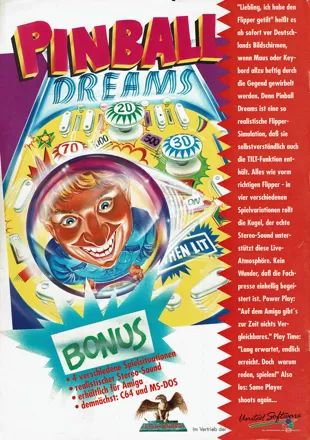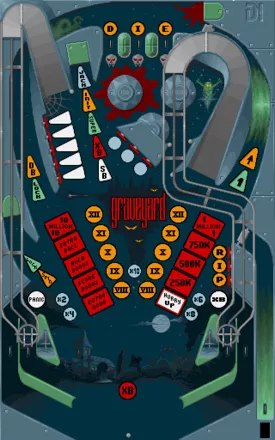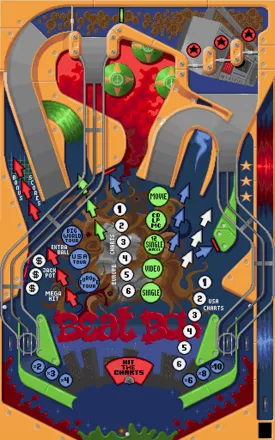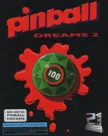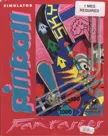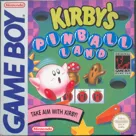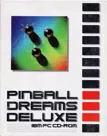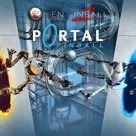Pinball Dreams
Description official descriptions
The first in a line of pinball games from 21st Century and Digital Illusions, with four tables covering themes such as the wild west for Steel Wheel, space rockets for Ignition, a haunted graveyard for Nightmare and pop music for Beat Box.
The portable versions for the Game Boy and Game Gear only have 3 of the 4 original tables with the removal of Beat Box.
The iPhone version includes updated graphics (optional) and gameplay in both portrait and landscape orientation.
Spellings
- ピンボール・ピンボール - Japanese SNES spelling
Groups +
Screenshots
Promos
Credits (Amiga version)
7 People
| Game Design |
|
| Programmer | |
| Graphics | |
| Music and Sound-effects | |
| Real-time ball routines | |
| D.I. team co-ordinator | |
| Producer |
Reviews
Critics
Average score: 78% (based on 48 ratings)
Players
Average score: 3.9 out of 5 (based on 143 ratings with 2 reviews)
A horrible conversion of a true pioneer.
The Good
The PC version of this game is one of the most horrible conversions I have ever seen.
But lets discuss the good things: Incredible music, such as is rarely heard in a computer game, and fits the game like a glove (but then it's copied from the Amiga classic). The graphics are great, detailed and lush in colour - but the aspect ratio is slightly incorrect (again, an exact replica of the Amiga version).
The Amiga version of this game is a pioneer, the first pinball simulator for the Amiga and definitely the best (until the amazing Pinball Fantasies was released), with an incredible physics model, excellent graphics, amazing music, great table design and amazingly fast engine. The PC version fails to capture the Amiga classic's splendour, and here's why:
The Bad
The physics model is not true to the original. The ball is completely jumpy and behaves erratically, sometimes flying off in the wrong angle.
The graphics don't look nearly as good as they did on the Amiga because, even though they're essentially the same, the aspect ratio is wrong: the Amiga version runs in 320x256 (PAL) whereas the PC version runs in 320x240 and screws the monitor up. The colours look more dull, for some reason (possibly a bad attempt to convert the palette) and the game is a LOT slower (didn't run very well on my 386 back in '93). The graphics are erratic and tend to flicker a lot.
The music, though directly copied from the Amiga, still doesn't sound nearly as good, owing to a horrible module player, nothing like the sheer screaming quality of Pinball Fantasies.
And with Epic Pinball and Pinball Fantasies around, why in the name of God would anyone play this thing?
The Bottom Line
A horrendously imperfect conversion of one of the few true pioneering games in the history of computing.
DOS · by Tomer Gabel (4534) · 2000
The best pinball simulator for the 90's!
The Good
Great board control, nice art work and loud and bouncy sampled music and sampled sound effects makes this game a classic! Other pinball games just couldn't live up to this level of coolness back in 1992! Once you play this and compare it to one of those newer pinball games for the PC you'll notice that you'd rather play this one due to it being simple and fun.
The Bad
I loved it! Nothing wrong! Well maybe some parents would question language of the Beatbox board if you hit the "Europe" and "USA" targets too fast...Hmmm.... Also I never knew there was a PC/DOS version of this game but I say avoid it and just go for the Amiga version for the full on effect of the great sound and art.
The Bottom Line
Simple and easy to understand pinball game boards that will keep you and your friends fighting over who can get the highest score for years and even decades!
Amiga · by skl (1059) · 2008
Trivia
1001 Video Games
Pinball Dreams appears in the book 1001 Video Games You Must Play Before You Die by General Editor Tony Mott.
Conversions
Digital Illusions wrote the original Amiga version for all their pinball games. All the renditions of other platfoms were built by 21st Century Entertainment or their subsidiaries, The team provided only technical advice. The only exception was when a group of Swedes from Uppsala contacted them after the dreadful version of "Pinball Dreams" one the PC came out. They ended up taking on the task of converting "Pinball Fantasies" and "Pinball Illusions" with splendour. Andreas Axelsson gave also support to Binary 9 for the GBA version of "Pinball Dreams" as well as to Rocket in Finland during the creation of mobile phone version.
Commodore 64 version
In 2002 Werner van Loo started development of "Pinball Dreams" for Commodore 64 after a bet he took with one of the IRC channel participants. The argument was that a game like "Pinball Dreams" could never be converted faithfully to the C64. Naturally, a few things had to be omitted to fit the C64. The score display was changed from "LED-bar" to a "dot-matrix" as you can't make nice diagonal lines in the upper border of the C64, flippers have less animation frames (only seven). Two tables (Steel Wheel and Beat Box) were left out due to highly time consuming effort. After ten years Werner lost his interest in the conversion. He released a source code of this work and a preview demo was compiled by a demo scene group Laxity in 2012. They stated that it seemed quite difficult to add more features to the game so it probably wouldn’t be finished. More information can be found here.
Copy protection
The game featured a copy protection which required write access on the original floppy - not a good idea those days with all the virii floating around and no-one caring about getting a virus scanner. Besides, the copy protection didn't protect the game at all.
Cracking scene
There were rumors that Digital Illusions made a special HD-installed version of Pinball Dreams for their friends in the scene. Many Amiga games couldn't be installed on a hard drive as a copy protection measure. When the was released, many cracking groups made a pact not to crack and spread the game because of the game maker’s strong roots in the scene. This pact didn’t last for long and the game was later illegally released and spread.
Demo version
In a demo version of the game, where only the Nightmare table is playable for five minutes, there is a screen giving a notion what one should expect from the full version. In this text the Beatbox table was named "Rap Attack" where players were supposed to become the number one rapper.
Development
The developers were members of the Amiga demoscene group The Silents and the game was originally not planned to be released as a commercial game. The idea to make Pinball Dreams came up in 1988 when Mikael Balle, another member of The Silents, had drawn some pinball tables (assumedly on the Amiga). However, his tables were not used for the game, but his ideas of having tables larger than the actual screen size (scrolling) remained. In 1989 Andreas Axelsson, Ulf Mandorff, Markus Nystrom, Olof Gustafsson and Fredrik Lilegren started development. Ulf Mandorff, who studied technical engineering, was responsible for ball's physics engine. It took him six months to finish it. During that time another team member - Olof Gustafsson - proclaimed as a genuine pinball freak, spent daily hours in arcades studying different pinball machines, figuring out most of the scoring and events for the tables plus he recorded the sounds of real machines. In 1990, when the game was half finished, they formed a group called Digital Illusions only to put on taxes. During ECTS in 1990, they presented the game to Bitmap Brothers and their publisher Renegade as well as to 21st Century Entertainment. Both companies turned down the game and Renegade stated that pinball games do not sell well. A year later, on the very same ECTS, they game was basically completed but the only company that was left interested in publishing the title was 21st Century Entertainment. Pinball Dreams and Pinball Fantasies became one of the biggest hits ever released for Amiga computers.
Tools used for developing Pinball Dreams on Amiga: DevPak (assembler), Deluxe Paint III (graphics), ProTracker 1.1b (music), PowerPacker 2.0b (cruncher).
Mouse control
The developers once met a handicapped kid with only one hand, and made a special version of the game for him where you can control the flippers with the two mouse buttons. This feature does also appear in the sequel, Pinball Fantasies.
PKUnzip
DOS version of the game disk included a registered version of PKUnzip - someone must have made a mistake putting it together.
Sound card
You had to select the sound card / PC speaker every time you started the game.
Awards
- Computer Gaming World
- November 1996 (15th anniversary issue) – #119 in the “150 Best Games of All Time” list
Information also contributed by Erkan O, Grov, phlux and xxxxxxxxxxx
Analytics
Upgrade to MobyPro to view research rankings and price history! (when applicable)
Related Sites +
-
Atari Falcon Pinball Dreams
The copyright holders have permitted the game to be distributed freely. Download it here.
Identifiers +
Contribute
Are you familiar with this game? Help document and preserve this entry in video game history! If your contribution is approved, you will earn points and be credited as a contributor.
Contributors to this Entry
Game added by Retron.
SNES added by B.L. Stryker. PSP, iPhone added by Vesuri. GP32 added by Rola. PlayStation 3 added by Charly2.0. PS Vita added by Alaka. Atari ST, Game Boy, Game Gear added by Игги Друге. Amiga added by MAT.
Additional contributors: Sciere, Freeman, Игги Друге, Cantillon, Patrick Bregger, mailmanppa, Rik Hideto, FatherJack.
Game added January 9, 2000. Last modified December 19, 2024.


